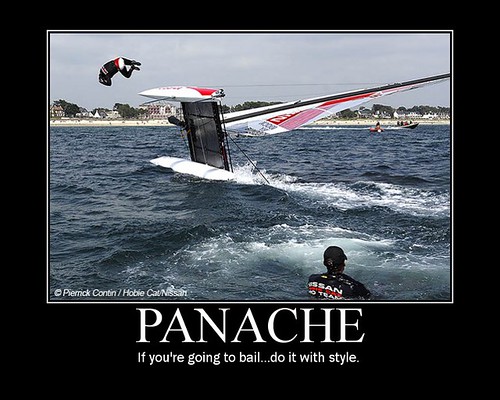Here is the process I use (Single handed)
1) Let the sheet off enough so that I am no longer being heeled over.
2) Come in off the trap, As I am coming in, I use my body momentum to start steering up into wind.
3) As I am now back on the trap, I let the main out, about a foot or more, If it is light wind, or if I feel that it's going to be a slow tack, I let it WAY out (This is just when I am coming head to wind)
4) I pass the tiller around behind mem, while I am doing this I make sure I do not reverse the rudders or straighten them back in.
5) As I have now switched sides, I wait until the main sail "Pops" over (Sail fils and battens flex over, with a WHOMMMMP sound.
6) This is my que to reach forward and uncleat the jib from the now windward side, and pull it in quickly from the leward cleat. This pulls the bows downwind, as the main is still not powered up.
7) Now I Hook my harness to the dog bone.

. Begin powering up the main enough to get the boat moving. I then slide out on the tramp, powering up the main as I am going out, and heading up onto the next beat.






